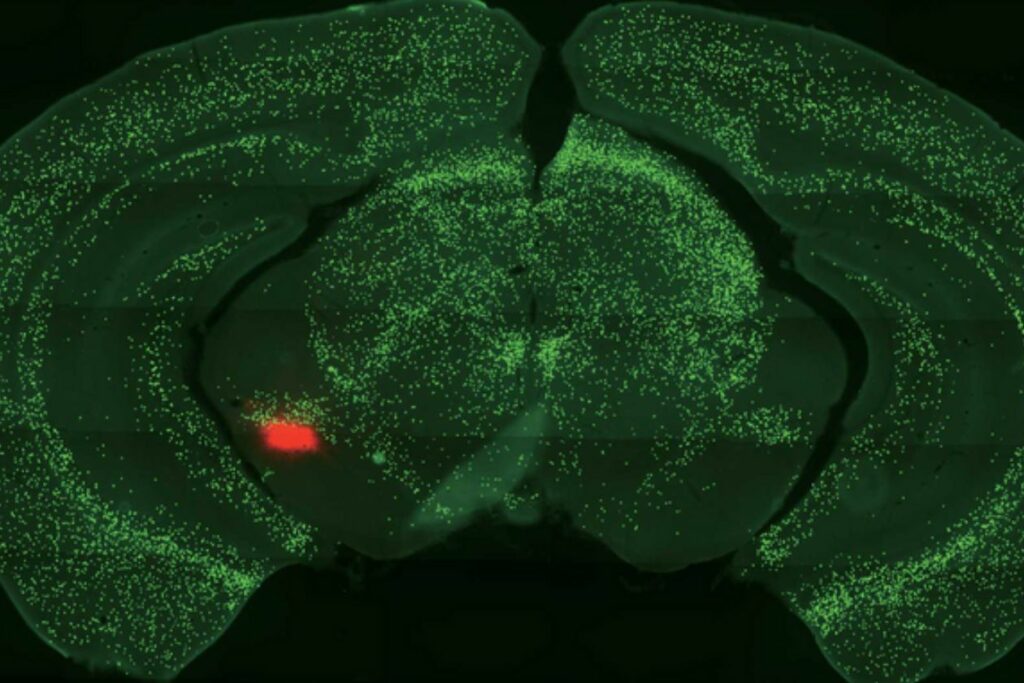The amygdala, two small cell masses nestled deep within the temporal lobes of our brain, plays a crucial role in our survival. These almond-shaped structures are responsible for a range of vital functions, from facilitating learning and memory formation to activating our instinctive fight-or-flight response.
Additionally, the amygdala is also involved in the release of dopamine, a neurotransmitter that contributes to feelings of pleasure and reward.
Despite extensive scientific research spanning hundreds of years, we still lack a complete understanding of the complex workings of the amygdala. Nonetheless, our growing knowledge of this region of the brain continues to shed light on its role in shaping our thoughts, emotions, and behaviors.
Bo Li, a neuroscientist at Cold Spring Harbor Laboratory, has made significant strides in our understanding of the brain’s inner workings. Li’s latest research has revealed new insights into the function of a specific group of neurons located in the central amygdala (CeA) called somatostatin-expressing (Sst+) neurons. His findings have illuminated the crucial role these neurons play in our ability to learn about potential threats and rewards.

Additionally, Li’s research has uncovered a fascinating connection between Sst+ CeA neurons and the neurotransmitter dopamine. The implications of these discoveries are far-reaching, with the potential to inform future treatments for conditions such as anxiety and addiction.
To investigate the role of Sst+ CeA neurons in the learning process, Li and his team conducted experiments in which mice were trained to associate certain sounds with specific rewards or punishments. By imaging the brains of these mice throughout the experiment, Li was able to gain valuable insights into the neural mechanisms underlying the learning process.
For years, researchers had believed that the amygdala lacked the ability to differentiate between positive and negative stimuli. However, Bo Li’s team at Cold Spring Harbor Laboratory has uncovered evidence to the contrary. Li’s team’s groundbreaking research has demonstrated that the neurons in the central amygdala (CeA) exhibit distinct responses to various types of rewards and punishments.
Remarkably, Li’s team has also identified specific patterns of neuronal activity that correspond to different types of rewards. For instance, when mice were given water, their CeA neurons exhibited a different firing pattern than when they were given food or sugar water.

“This is entirely new to us,” comments Li.
“These neurons really care about the nature of each individual stimulus. It’s almost like a sensory area.”
After the training, the researchers noticed a significant increase in the activity of Sst+ CeA neurons in the mice’s brains, indicating their crucial role in the learning process. To confirm this hypothesis, the neuroscientists performed an experiment by suppressing the Sst+ CeA neurons in some mice. The results demonstrated that these mice were unable to establish connections between sounds and rewards or punishments, indicating the critical role played by Sst+ CeA neurons in the learning process.
By inhibiting the neurons, the researchers made a crucial discovery: the normal responses of dopamine neurons were also suppressed. Although previous studies had established a connection between the CeA and dopamine neurons, the nature of this connection remained unclear until now.
“We found those neurons are required for normal function for dopamine neurons, and therefore are important for reward learning,” Li adds. “That is direct evidence of how CeA neurons regulate the function of dopamine neurons.”
Li’s next plan is to investigate the correlation between Sst+ CeA neurons and addiction, which may pave the way for improved treatment methods for individuals suffering from opioid or methamphetamine addiction, according to him.
The findings provide “a basis for developing more specific ways to regulate these neurons in different disease conditions,” Li adds.
Source: 10.1038/s41586-023-05910-2
Image Credit: Li lab/Cold Spring Harbor Laboratory
